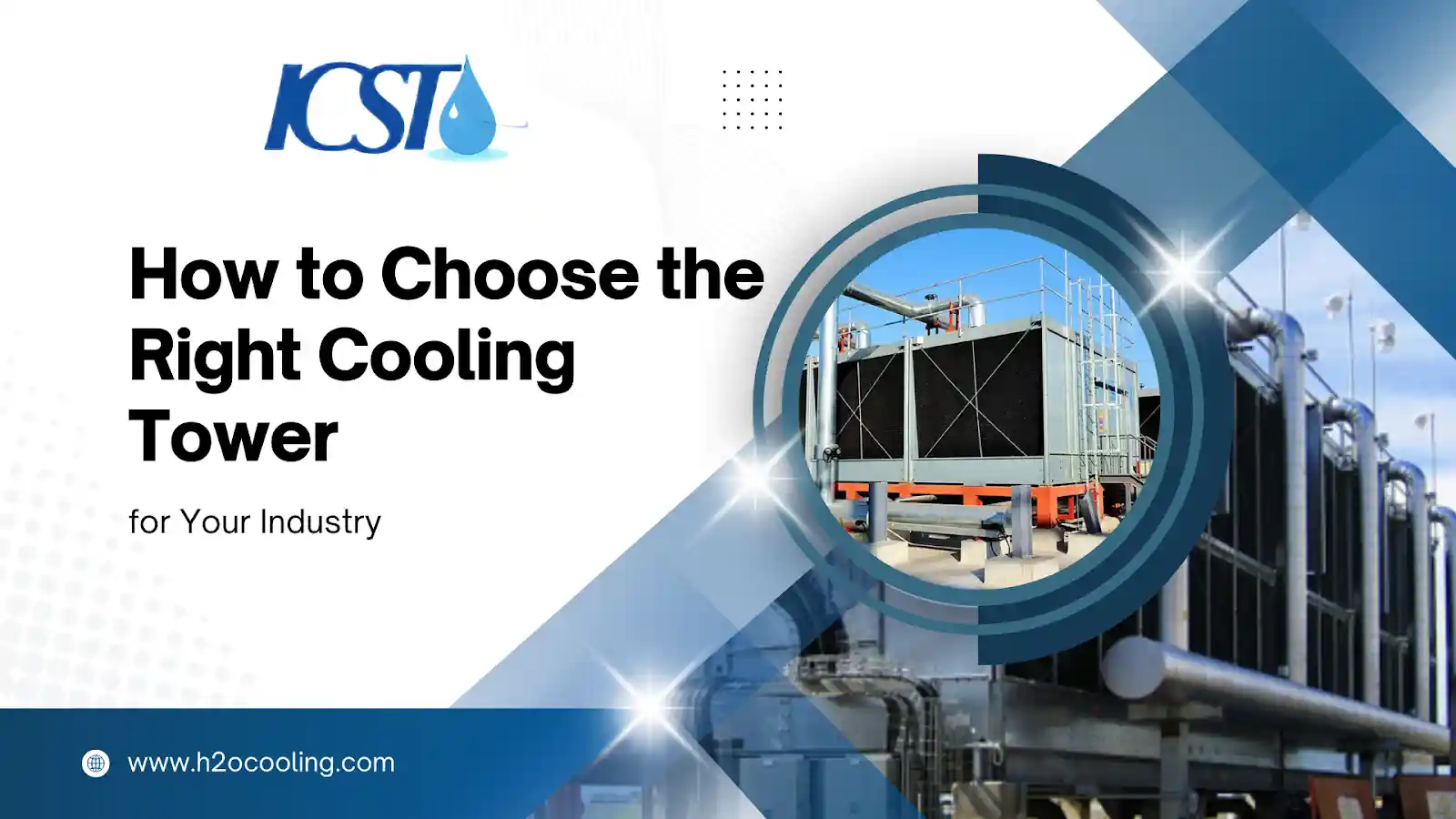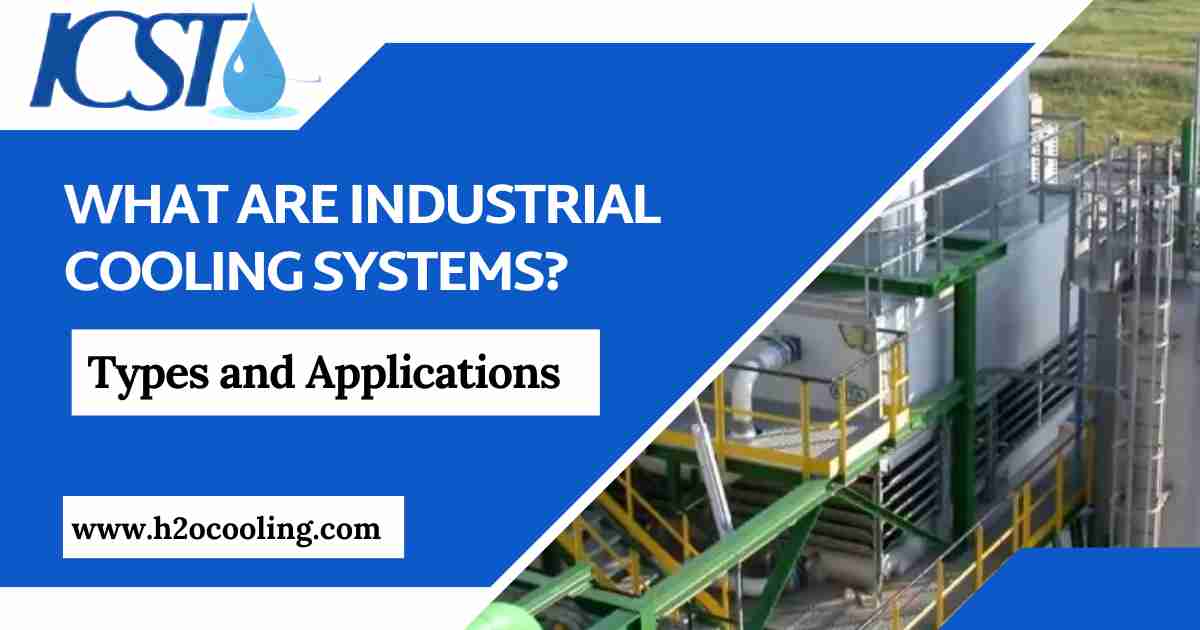Cooling towers might not be something we think about often, but they play a crucial role in keeping industries running smoothly. I find it fascinating how these engineering marvels efficiently remove excess heat from industrial processes. By doing so, they help maintain operational stability, lower energy consumption, and prevent equipment from overheating.
Understanding how cooling towers work is not just about appreciating the technology. It’s essential for optimizing performance, minimizing operational costs, and ensuring your facility runs at peak efficiency.
This guide will walk you through the working mechanism, key components, and applications of industrial cooling towers, highlighting their importance in modern industrial systems.
Table of Contents
ToggleWhat Is an Industrial Cooling Tower?
An industrial cooling tower is a highly efficient heat removal system designed to regulate temperature in machinery, processes, or buildings. By leveraging the natural interaction between water and air, it effectively dissipates excess heat, ensuring optimal performance and preventing overheating of critical systems. These specialized structures play a vital role in maintaining thermal balance across various industries.

Industries use these evaporative cooling towers wherever large amounts of heat need to be removed. For example, power plants, manufacturing facilities, chemical processing units, and oil refineries all rely on these systems.
Cooling towers work by using the power of evaporative cooling, where hot water is cooled as it meets air. This smart, energy-efficient solution helps manage heat effectively, preventing costly equipment failures and ensuring smooth operations.
How Industrial Cooling Towers Work?
Cooling towers work through a series of steps designed to maximize heat exchange between water and air. Here’s how it benefits you: by efficiently removing excess heat, cooling towers help maintain optimal temperatures in industrial processes, and even power plants. Here’s a breakdown of how it all works:
1. Pumping Hot Water into the Cooling Tower
Hot water is extracted from industrial systems and transported into the cooling tower via pumps. This water carries the residual heat generated by industrial processes, which needs to be removed to ensure the proper functioning of machinery and systems.
- Pumps are designed to handle high temperature and pressure, ensuring efficient water transport.
- The volume of water pumped depends on the scale of the industrial operation and the cooling tower’s capacity.
- Proper maintenance of pumps is critical to avoid inefficiencies or breakdowns in the system.
2. Water Distribution Over Fill Media
Once inside the tower, the hot water is evenly distributed over internal surfaces, known as fill media. These surfaces are engineered to maximize the water’s exposure to air, enhancing the heat exchange process.
- Fill media can be splash or film type, each designed for specific cooling needs.
- Even distribution is critical to prevent uneven cooling and ensure the tower operates at full efficiency.
- Advanced nozzles are often used to uniformly spray water onto the fill media, avoiding dry zones.
The design of the fill media ensures that water spreads across as much surface area as possible, optimizing cooling performance.
3. Airflow Through the Cooling Tower
Simultaneously, air enters the tower to facilitate the cooling process. Depending on the type of cooling tower, airflow can either occur naturally (natural draft cooling towers) or be driven by fans (mechanical draft cooling towers).
- Natural Draft Cooling Towers: These rely on the natural convection of air, making them energy-efficient but suited for large-scale operations.
- Mechanical Draft Cooling Towers: Fans drive the airflow, providing greater control and adaptability for different operational needs.

The cross or counterflow of air with water amplifies the cooling effect, ensuring that the heat is efficiently transferred away from the system.
4. Evaporation and Heat Transfer Process
Ever wondered how cooling towers work their magic? It’s all about evaporation. When hot water meets cooler air, a small amount of the water evaporates, pulling heat energy along with it. This natural process cools the remaining water, making it ready to take on the heat once again. Simple, yet fascinating, right?
The heat transfer depends on the temperature and humidity differences between the water and the air. Through this evaporative cooling process, the water temperature drops while the absorbed heat is released into the atmosphere, ensuring the system remains balanced.
5. Collection and Recirculation of Cooled Water
The cold water collects at the base of the tower in a basin specifically designed to hold and manage water flow. From there, it is recirculated back into the industrial system to absorb more latent heat and continue the cycle. To maintain efficiency, some water is periodically drained and replaced through a bleed-off process, which helps prevent mineral buildup, scaling, and contamination.
This circulating water not only reduces water wastage but also ensures consistent operation. By continuously heating, cooling, and recirculating, industrial systems remain operational without overheating, ultimately enhancing productivity and reducing energy costs.
Types of Industrial Cooling Towers
When it comes to industrial cooling towers, there’s no one-size-fits-all solution. Each type is designed for a specific job, and I’m here to give you a quick rundown so you can find the one that’s right for your needs. Let’s dive in!
- Natural Draft Cooling Towers:
These towers use natural airflow for cooling, making them energy-efficient. Common in large-scale industries like natural gas processing plants, they operate without mechanical fans, ensuring effective cooling with minimal energy use.
- Mechanical Draft Cooling Towers:
Equipped with fans, these towers provide precise cooling control and work across industries like HVAC and manufacturing. They are reliable in various environments, making them a versatile choice.
- Counterflow vs. Crossflow Cooling Towers:
Counterflow cooling tower systems move air vertically against water for efficient cooling, while crossflow towers move air horizontally for easier maintenance. Counterflow is more efficient, but crossflow cooling tower systems offers simpler upkeep.
- Forced Draft vs. Induced Draft:
Forced draft cooling towers push air into the system, offering strong cooling but higher energy use. Induced draft cooling towers pull air out, providing better efficiency and reducing hot air recirculation.
- Open-Circuit vs. Closed-Circuit Systems:
Open-circuit towers expose water to air, suitable for less sensitive applications. Closed-circuit cooling towers use a sealed loop to maintain water purity, ideal for industries requiring contamination-free cooling.
These distinctions are crucial for selecting the right cooling tower for your facility. Not sure which cooling tower will work best for your space or facility? Contact ICST, where our experts will guide you every step of the way and provide all the support you need.
Industrial Cooling Tower Components
Every cooling tower relies on a carefully designed set of components working together to keep things running smoothly. These cooling tower parts or components each play a vital role in the cooling process, ensuring efficiency and performance. Curious to learn more? Here we go!
- Fill Media: Enhances contact between water and air, optimizing waste heat transfer.
- Drift Eliminators: Reduce water loss by minimizing the amount of droplets escaping the tower.
- Nozzles and Distribution Systems: Evenly distribute hot water over the fill media.
- Fans and Motors: Facilitate airflow, either by pushing or pulling air through the tower.
- Basin: Collects cooled water before it is recirculated.

The materials used in these components are critical, as they must withstand the specific requirements of the water being cooled. Corrosion-resistant materials, such as fiberglass, are often preferred for aggressive or acidic water conditions.
Industrial Cooling Tower Applications and Efficiency
Cooling towers are critical for the smooth 24/7 operation of many industries. From manufacturing plants to power stations and chemical facilities, these systems play a vital role in maintaining optimal temperatures.
Without a functioning cooling tower, operations can come to a halt, leading to overheating, equipment damage, costly downtime, and potential safety hazards. Ensuring their reliability is essential to keep industries running efficiently and avoid severe disruptions.
Here are the main industries that heavily rely on cooling towers:
- Power Generation: Removing excess heat from turbines and generators.
- Nuclear Power Plants: Rely on massive natural draft towers for thermal regulation.
- Food Processing Plants: Maintain hygiene and prevent overheating during production.
- Air Conditioning Systems: Use water cooled chillers and cooling towers to regulate building temperatures.
- Data Centers & Refineries: Remove heat from critical equipment using huge heat exchangers.
- HVAC Systems: Cooling systems in large facilities like hospitals, schools, and office buildings.
In each case, maintaining ideal cooled water temperature is key to performance and safety. They can achieve temperatures below the ambient temperature, making them particularly effective. However, their efficiency depends on factors like wet bulb temperature, airflow, and the heat exchange process.
A Guide to Cooling Tower System Maintenance
Regular maintenance of your cooling tower system is vital for ensuring efficient performance, reducing energy costs, and extending the lifespan of your equipment. Proper upkeep helps prevent system failures, minimizes downtime, and optimizes energy efficiency. Here’s what you need to know about maintaining your cooling tower system effectively:

Key Cooling Tower Maintenance Tasks:
- Perform Regular Cleaning: Remove scale deposits, algae, and debris to maintain smooth operation.
- Inspect and Replace Worn-Out Parts: Check fans, belts, and other components for wear and tear, replacing them as needed.
- Water Treatment: Use water treatments to prevent corrosion, scaling, and bacterial growth, ensuring water quality is maintained.
- Follow the Manufacturer’s Manual: Stick to periodic checkups and maintenance schedules outlined in your system’s manual.
- Monitor recirculating cooling tower water for impurities
Conclusion
Industrial cooling towers are essential for efficient and reliable system performance across various industries. They are advanced heat removal devices using evaporative cooling to maintain process stability in nuclear power plants, air conditioning systems, and food processing plants alike. They use evaporative cooling, where hot water is sprayed over fill media as air flows through, causing some water to evaporate and cool the rest.
Whether you’re using factory assembled cooling towers, relying on natural air circulation, or operating complex water cooled chillers, understanding how these systems work helps maximize efficiency and minimize downtime. Regular maintenance and proper operation ensure these systems remain effective for years.
Need a reliable partner for cooling tower upgrades, maintenance, or water treatment chemicals? Contact ICST today for expert support tailored to your needs.
Frequently Asked Questions
How do industrial cooling towers work?
Industrial cooling towers work by using the process of evaporative cooling. Hot water from industrial systems is pumped to the top of the tower and distributed over fill media. As air flows upward (or across, depending on the type), a small portion of the water evaporates, removing heat from the remaining water. The cooled water collects at the bottom and is recirculated back into the system.
2. What is the mechanism of tower cooler?
The mechanism of a tower cooler involves evaporation and heat exchange. As hot water flows over fill materials, air is either forced or drawn through the tower. The air absorbs heat from the water, and evaporation occurs, which removes the heat. The cooled water is then reused in the system.
3. How do cooling towers remove heat through?
Cooling towers remove heat through the evaporation of water. When warm water from industrial processes is sprayed inside the tower, it comes into contact with air. As some water evaporates, it carries away heat energy, thus lowering the temperature of the remaining water.
4. What is the basic operation of a cooling tower?
The basic operation of a cooling tower is to reject waste heat to the atmosphere. This is done by circulating warm water through the tower, where it is exposed to air. A small amount of water evaporates, extracting heat and cooling the rest. The cooled water is collected and returned to the equipment it came from.







